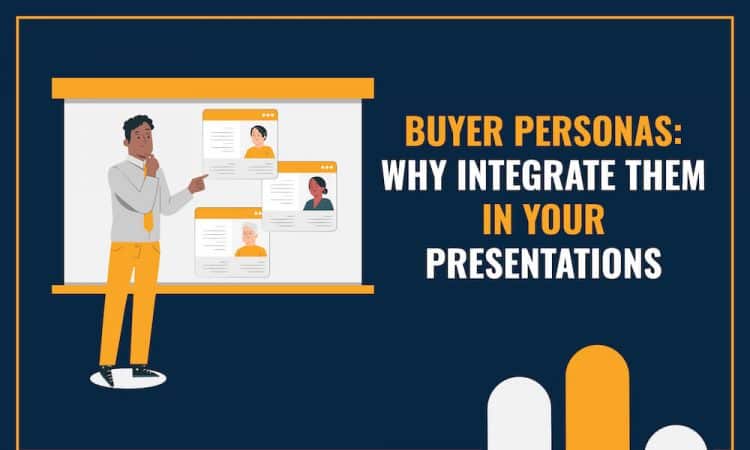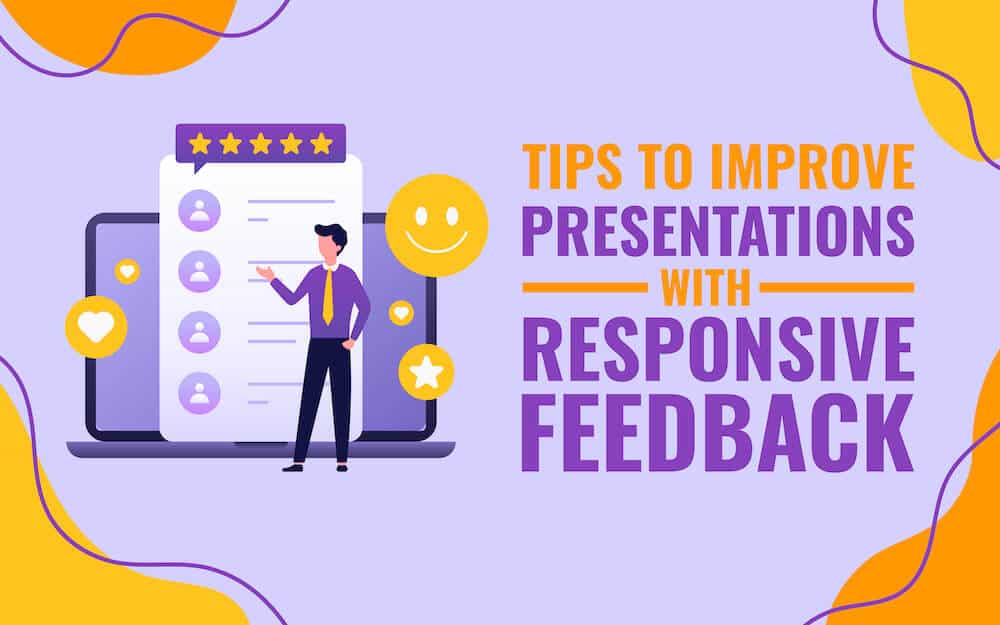
Presentations are a powerful medium to communicate and convey your ideas to the audience. As presentations are meant to educate, inform, train, persuade, or inspire the intended audience, it’s essential to understand and leverage buyer persona to give the right direction to your content creation and slide design efforts.
So, let’s explore what buyer persona means in a presentation, why it is important, and how you can infuse it into your message. Read on!
What is the Buyer Persona in Presentations?
In the context of presentations, buyer persona means the semi-fictional but specific and detailed description of the audience to whom you want to communicate your information or message.
A buyer persona helps you focus on the audience’s needs and pain points and provides insights into what they expect from your presentation. It also guides you in delivering your talk so that the audience willingly and attentively listens and understands what you have to say.
Importance of Understanding Buyer Persona for Presentations
1. Builds Empathy
Buyer persona helps you empathize with your audience by providing you with valuable information about their behaviors, experiences, and goals. You can strike the right balance in your content, reflecting that you genuinely understand and care about the problems and interests of the audience.
In a nutshell, buyer persona guides you in your presentation creation journey, helping you create the right and engaging narrative for a specific audience segment.
2. Customized Content
A generic message doesn’t engage all the audience segments equally and is often overlooked or neglected as it fails to live up to their expectations and address their concerns.
Thus, to create relevant, customized, and meaningful content, you must take into account the buyer persona.
Buyer persona lets you uncover crucial details about what motivates or inspires the audience and how familiar they are with the topic. By including those motivational factors and the right amount of information in your presentations, you can engage with your audience without overburdening them and encourage them to take action.
3. Boosts Engagement
Personalization is the key to driving engagement. The buyer persona serves as a blueprint for personalizing your message to resonate with the target audience’s specific aspirations, needs, problems, and preferences. It also reveals the knowledge level and familiarity of the audience with the topic and helps you craft a more personalized message that directly relates to them.
A personalized message helps you build trust and clearly articulate a value proposition, reflecting that you genuinely understand and value the audience. It also fosters a sense that you pay individualized attention to all audience members.
4. Impressive Visual Design
Each audience segment resonates differently with specific colors, imagery, and fonts. Here, the apt understanding of buyer persona helps you decide the visual design of your presentations and leave a lasting impression on the audience.
For example, if your audience is more inclined towards emotional connections, you can instantly grab their attention by incorporating images into your slides. On the other hand, if they prefer in-depth analysis, including infographics and data-driven charts in your presentations will make all the difference and increase the likelihood of quick message receptivity by the audience.
5. Content Delivery Style
What should be your content delivery style to a particular group of audience? Should you keep your pace slow or fast? Should you use storytelling or include examples or case studies in your presentation? Should you keep your tone professional and formal or choose a friendly and conversational tone?
You will get answers to all these questions by looking into the buyer persona of the audience. It also provides you insights into their communication style, giving you a clue about what words and language you should use to match their style and garner their undivided attention.
Steps to Infuse Buyer Persona into Your Presentation
You need a strategic approach to align the elements (design, content, and delivery) of your presentation with the audience’s specific buyer persona (preferences, needs, and challenges).
Here are the steps that will help you infuse buyer persona in your presentations.
a). Define Your Presentation Goals
Do you want to provide training on new software implementation or pitch for your startup? Or do you intend to deliver a keynote on team building? Your presentation goal could be any.
A well-defined goal serves as a roadmap to identify your target audience.
For example, if your goal is to deliver a presentation on climate change, your ideal target audience will be policymakers, environmentalists, scientists, and the general public.
b). Understand Your Target Audience
Research your audience’s demographics (gender, age, income, geography, etc.), interests, challenges, goals, and other details. Gather your research information and identify common characteristics to segment your audience.
By the end of this step, you will have a comprehensive and distinct buyer persona of each audience segment. It will further help you align every aspect (design, content, and delivery) of your presentation with the audience’s preferences.
Let’s understand it with an example.
Presentation Goal – Educating about Climate Change Solutions
Target Audience – Policymakers, environmentalists, scientists
Ideal Buyer Persona –
| Background: Age – 25 to 60 years Education – Graduate/Post-graduate Occupation – Campaign organizers, policymakers, environmental activists Interests – Community engagement, sustainability, renewable energy, conservation Demographics: Income – Middle-class income Location – Metropolitan areas Goals and Motivations: – Strong inclination towards encouraging the use of sustainable practices – Aim to promote policies and causes that support environmental conservation Pain Points: – Facing challenges in engaging and involving the general public in sustainable causes and initiatives – Struggling to encourage people to follow new environment-related policy. Values: – Believe in community involvement and collective action – Value data-driven solutions to mitigate environmental concerns – A proponent of sustainable practices and initiatives Information Preferences: – Active on social media platforms to build communities and raise awareness – Has updated information on policy developments and climate change – Prefer easy-to-understand and visually engaging content for educating the public Communication Style: – Leverage various mediums to reach a diverse audience – Engage in community events and public speaking to raise awareness |
3. Create Personalized Content
Now that you are well-acquainted with the buyer persona, it’s time to leverage this information to create gripping content oriented in line with the unique characteristics of the audience.
You can include storytelling, examples, case studies, anecdotes, and personal experiences to relate to the specific persona of the audience.
If you are presenting to a diverse audience with different personas, segment your content to interact with all audience members. You can improve engagement by transitioning between segments.
4. Develop Responses to Objections
As audiences with different personas have different aspirations, objections are obvious. You can anticipate all the possible queries and objections beforehand and create responses to address them confidently and efficiently. Use relevant case studies, statistics, or evidence to back your responses.
Objections are an opportunity to strengthen your presentation and make it more collaborative. So, acknowledge objections and turn them into open discussions.
5. Focus on Visual Engagement
Visuals are universally accessible and can engage diverse audience segments with different communication styles. You can make your presentations more inclusive and break the monotone by complementing your textual content with diagrams and charts, icons, infographics, and other relevant visuals.
Besides this, visuals help you in many other ways – simplifying the message, adding clarity, reducing cognitive overload, and evoking emotions.
The Inference
A thorough and precise knowledge about the audience’s adaptability to change, cultural sensitivity, interests and hobbies, motivations, values, etc., is the cornerstone of an impactful presentation. It helps you empower your core message with the right words, elements, and tone.
Remember, a presentation tailored to the buyer persona of different audience segments transforms your entire communication and aids you in forging a long-term relationship beyond that event, conference, or seminar. So, invest some time and effort in knowing your audience closely if you want your presentation to hit the mark.



